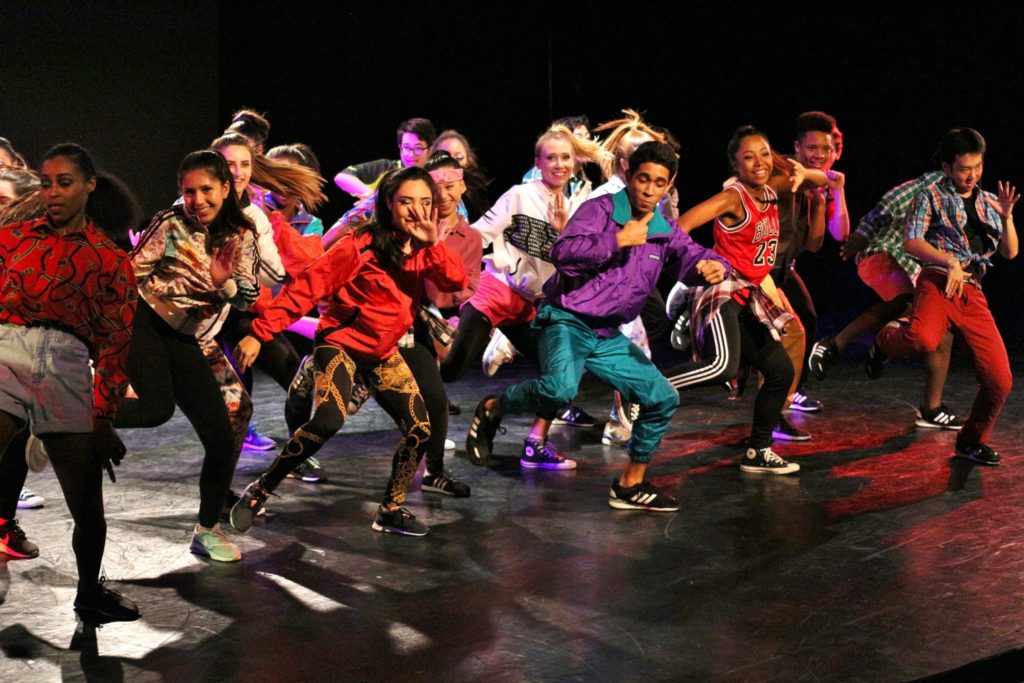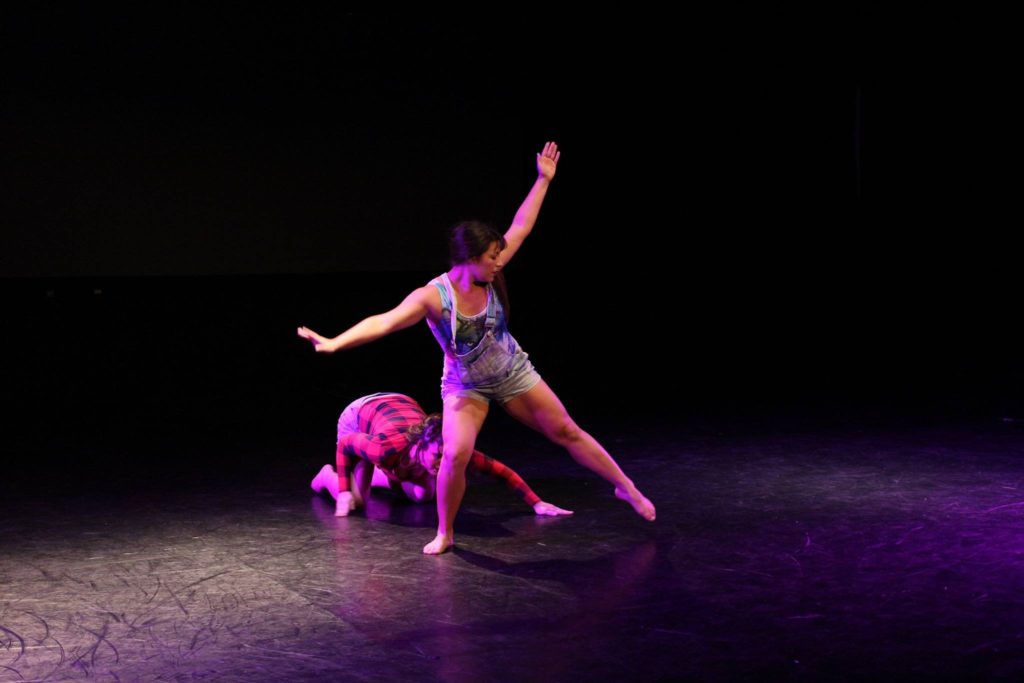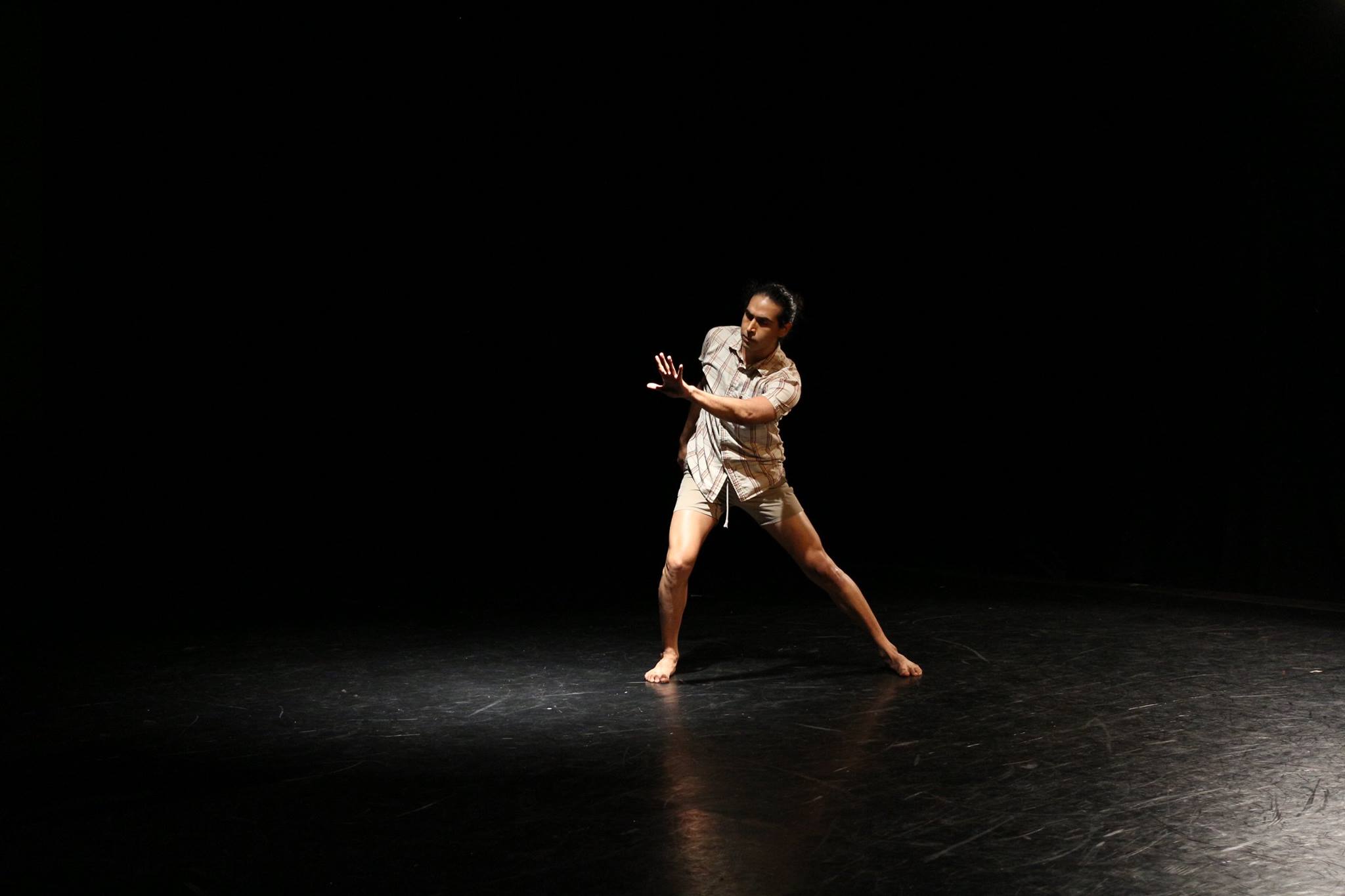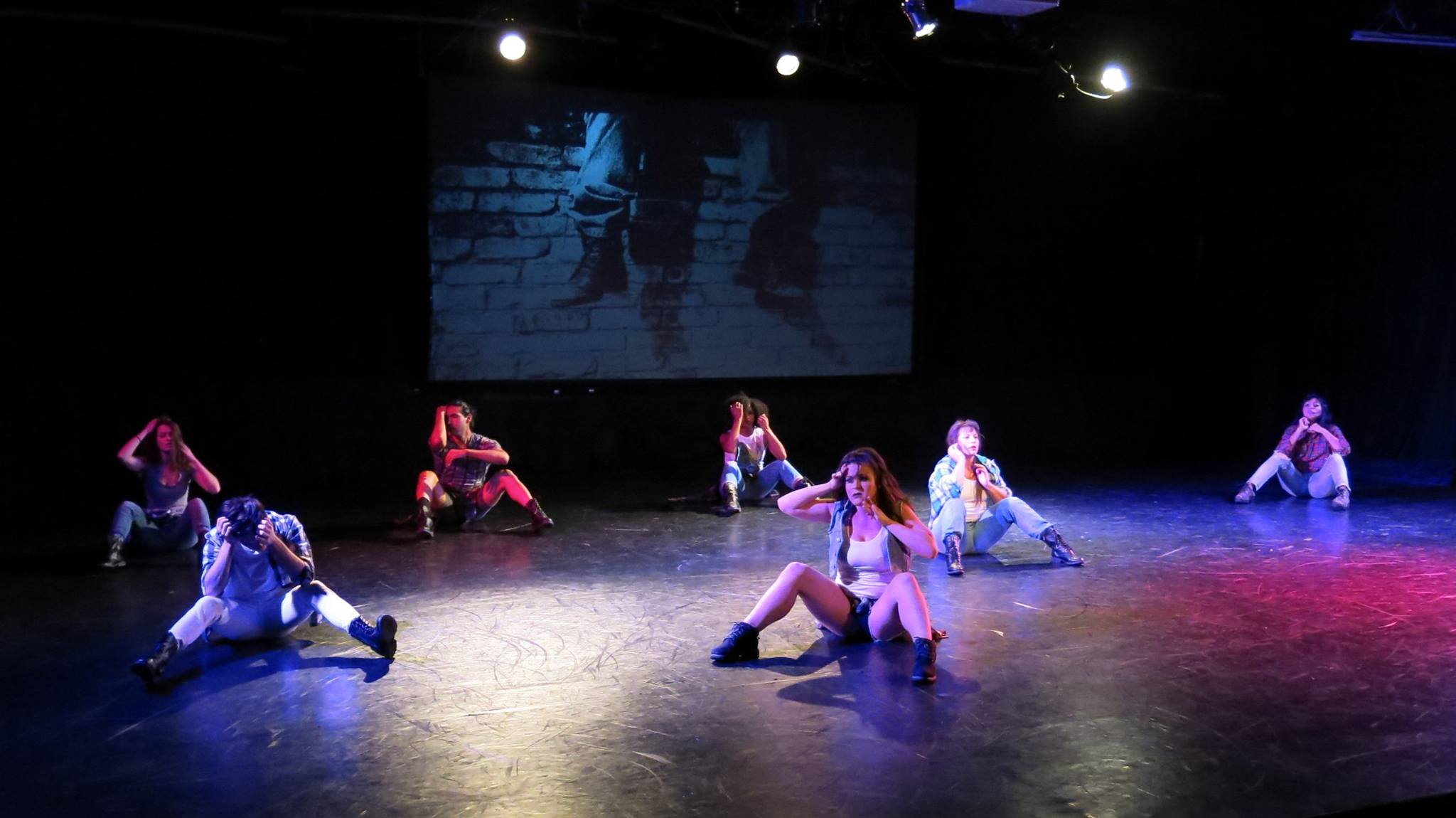Youth of a Nation: A Dance Retrospective of the 90s

All photos by Steve Patlan
For a portion of the audience at The Pilot on Navigation (formerly Frenetic Theatre), myself included, Youth of a Nation: A Dance Retrospective of the 90s is a chance to relive the past a little. Music before and during the production brings on waves of nostalgia and the costumes are amusingly pinched from the wardrobe of memory.
For others, the show is an exploration of a decade in which they had little involvement. Included in this latter group are a majority of the performers of FrenetiCore Dance and Inertia Dance Company (an ensemble of Westside High School fine arts students) and even some of the production’s choreographers.
 For the most part, the short works on the Youth of a Nation program are artifacts of the pre-millennial era replicated and held up for inspection by those who aren’t entirely sure of their function or purpose. Loosely tied together by spoken word contributions from writer and poet Amyna Dosani and film segues by Melelani Peterson that prominently feature female cast-members, Tory Pierce and Kristina Prats, the assortment of dances touch on diverse subjects like the AIDS crisis, girl empowerment, Y2K, the Oklahoma City bombings and other cultural stamps of the 1990s.
For the most part, the short works on the Youth of a Nation program are artifacts of the pre-millennial era replicated and held up for inspection by those who aren’t entirely sure of their function or purpose. Loosely tied together by spoken word contributions from writer and poet Amyna Dosani and film segues by Melelani Peterson that prominently feature female cast-members, Tory Pierce and Kristina Prats, the assortment of dances touch on diverse subjects like the AIDS crisis, girl empowerment, Y2K, the Oklahoma City bombings and other cultural stamps of the 1990s.
Most of the work is intentionally light-hearted in both delivery and content and offered with little analysis or comment on the era. Urban choreography by Inertia directors Bryan Paule and Ty’Esha Lewis is well-developed with just the right energy and bounce to evoke the flavor of nineties street dancing. Their young team of dancers, dressed in track suits and waist-tied flannel, are engaging and give many of the most satisfying performances of the evening.
An assortment of local choreographers, including Cori Miller Capetillo, Tory Pierce, Heather VonReichbauer, Sarah Brotherton, Laurel Harrell, and Jennifer Hart Salter contribute contemporary dance works set on the FrenetiCore ensemble. Much of this work is executed with skill by its dancers but, like Salter’s cheeky love letter to the TV phenomenon “Friends,” provide only a Kodak shapshot in the time capsule. Viewers familiar with the decade’s events may long, as I did, for a little more depth in dances reaching into weighty subject matter but the material rarely challenges.
 Like an early Internet connection, the program does dial up a few meaningful moments that effectually demonstrate the relevance and relationship between our past and the history unfolding in our present time. In Harrell’s Sainted in Laramie dancers form a fence that fatefully looms and eventually advances upon soloist Adam Castaneda. It’s a moving depiction of the murder of college student, Matthew Shepard, which brought national attention to homosexual hate crime and motivated the eventual expansion in 2009 of federal hate crime legislation.
Like an early Internet connection, the program does dial up a few meaningful moments that effectually demonstrate the relevance and relationship between our past and the history unfolding in our present time. In Harrell’s Sainted in Laramie dancers form a fence that fatefully looms and eventually advances upon soloist Adam Castaneda. It’s a moving depiction of the murder of college student, Matthew Shepard, which brought national attention to homosexual hate crime and motivated the eventual expansion in 2009 of federal hate crime legislation.
Inertia’s team of dancers also struck a resonating chord early in the performance with Yo! COP. The b-boys of the company begin with a bemused nod to Yo! MTV Raps, a feature on the music network which was critical to the spread of hip-hop music and culture during the early 1990s. Though never heavy-handed, a poignant connection to current events is made as the music transitions to KRS-One’s 1993 single, Sound of da Police. The striking images of vibrant young men of color running under threat, chained together in a circular march, and in the vulnerable pose of arrest is still disappointedly close to the surface of experience more than twenty years later.
Dosani’s dear-diary interludes capture some of the concerns and unsettled emotion of 1990’s youth and caption Peterson’s wistful documentation of an intimacy that has not yet totally lost its innocence. These form a tenuous thread through the performances but provide little context. A date in the title, 4.19.95, is the only clue provided for Brotherton’s somber depiction of the aftermath of a domestic terrorist bombing that destroyed a federal building in Oklahoma City. Though avoiding the cliché of screen-captured headlines or stock news photos, Youth of a Nation, may have assumed a bit too much about what its audience, more than a few of whom were born on this side of the millennium, already knew or remembered.
 According to executive director, Castaneda, the production will be the last narrative-based dance work and possibly the last show produced under the FrenetiCore name as the organization transitions to a curated co-op model they are renaming Pilot Dance Project in 2017.
According to executive director, Castaneda, the production will be the last narrative-based dance work and possibly the last show produced under the FrenetiCore name as the organization transitions to a curated co-op model they are renaming Pilot Dance Project in 2017.
Ultimately, Youth of a Nation succeeds in providing a nostalgic look at an American era that manages to seem both distant and yet not so far away. It shows we’ve changed but not necessarily come so far as one might hope. And yet, hope is what the program delivers as its final message. Dosani’s measured voice assures that “everything is just temporary,” and its hard for even the most cynical to argue as Inertia’s company of joyful, radiant young faces dance us out to a club mix refrain of “it’s alright, it’s alright, it’s alright…”



Recent Comments